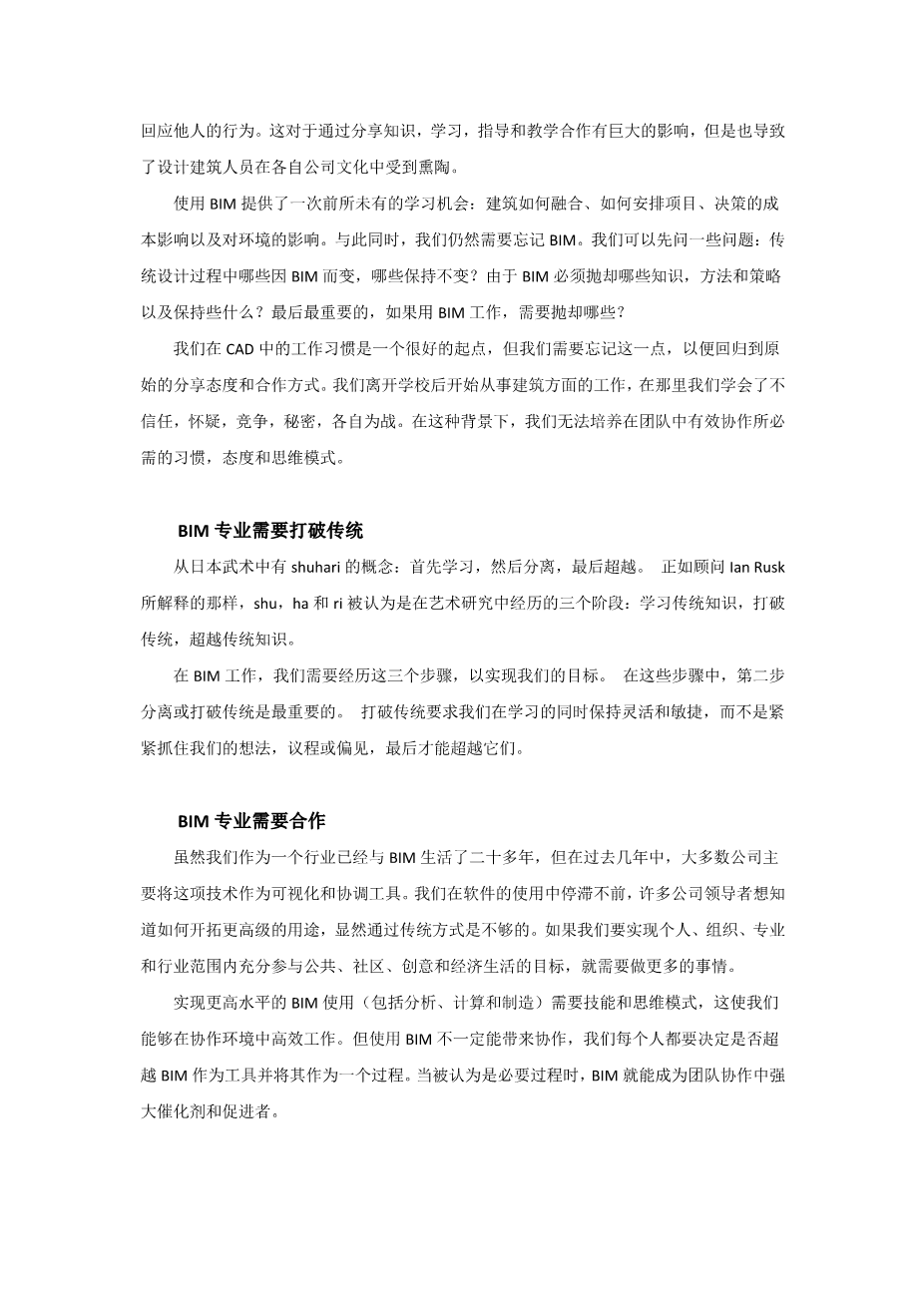BIM Beyond Boundaries
September 10, 2012 · by Randy Deutsch
Abstract: Opting for depth over breadth of expertise is a false choice that will lead individuals, organizations, the profession, and industry in the wrong direction.
Keywords: BIM, expertise, anti-learning, master builder
Several forces are converging to create an unprecedented and timely opportunity for organizations that have embraced building information modeling (BIM). These forces — including the rise of the expert, the growing complexity and speed of projects, and BIMrsquo;s increasing recognition as an enabler, catalyst, and facilitator of team collaboration — also present significant challenges that can be overcome with the right approach and mindset.
At one time, being an expert meant knowing more than onersquo;s competitors in a particular field. Firms that reinforced their expert culture hoarded information, which resulted in silos of expertise. Today, many firms are looking to hire people perceived as building and software technology experts, shortsightedly addressing todayrsquo;s needs at the expense of tomorrowrsquo;s. While architects have always been trees with many branches, our current economic climate has discouraged them from being anything but palm trees: all trunk, no branches.
And yet things change so quickly that those who went to bed experts are unlikely to wake up experts in the morning. Due to the speed and complexity of projects, we do not have time to acquire knowledge the old way — slowly, over time, through traditional means. Even when we supplement our book learning with conferences, webinars, and continuing education, it is impossible to keep up with the flow of new information in our industry.
Expertise today is a much more social, fluid, and iterative process than it used to be. Being an expert is no longer about telling people what you know so much as understanding what questions to ask, who to ask, and applying knowledge flexibly and contextually to the specific situation at hand. Expertise has often been associated with teaching and mentoring. Today itrsquo;s more concerned with learning than knowing: less to do with continuing education and more with practicing and engaging in continuous education.
Social media presents the would-be expert with both opportunities and challenges. Working with the understanding that somebody somewhere has already done what you are trying to do, design professionals, like agile technology experts, can find what theyrsquo;re looking for by tapping into their networks and aggregating the responses. Conversely, due to the rise of social media, virtually all anyone has to do today to be considered a technology expert is to call themselves one. Because social networks allow people to proclaim themselves experts, it can be hard to know who to turn to, resulting in the rise of otherwise unnecessary certifications.
An expert today is someone whose network, community, or team deems him or her so. Such acknowledgment from onersquo;s community can be considered a form of social certification. To grow onersquo;s professional reputation, expertise in BIM counter-intuitively requires unlearning, detachment, collaboration, and developing both deep skills and broad interests.
BIM EXPERTISE REQUIRES UNLEARNING
As we grow in our careers, we tend to focus more on people issues and less on technology. We also tend to cooperate conditionally, responding to the behavior of others. This has huge implications for design and construction professionals who might be naturally collaborative — through sharing knowledge, learning, mentoring, and teaching — but are otherwise conditioned and tempered by the culture of the firm where they work.
Working in BIM provides an unprecedented opportunity to learn: how buildings go together, how projects are scheduled, cost implications of decisions, and impact on the environment. At the same time, there is a great deal we still need to unlearn with BIM. We can start by asking some questions: Which aspects of the traditional design process change with BIM and which stay the same? What knowledge, methods and strategies must be abandoned due to BIM and what is critical to keep? And perhaps most important: What, while learning to work in BIM, needs to be unlearned?
While unlearning habits we picked up working in CAD would seem like a good place to start, therersquo;s also a great deal we need to unlearn in order to return to our original sharing attitude and cooperative ways. These include bad habits wersquo;ve acquired since we left the cocoon of school and embarked on the hard knocks of a career in architecture and construction, where we may have learned to be mistrustful, skeptical, competitive, secretive, and working independently in silos. In doing so, wersquo;ve unlearned many of the critical natural habits, attitudes, and mindsets necessary to work effectively and collaboratively on integrated teams.
BIM EXPERTISE REQUIRES DETACHMENT
From Japanese martial arts therersquo;s the concept of shuhari: First learn, then detach, and finally transcend. As consultant Ian Rusk has explained, shu, ha, and ri are considered three phases of knowledge that one passes through in the study of an art. They can be described as the phases of traditional knowledge, breaking with tradition, and transcending it.
Working in BIM, we need to address all three steps to meet our goals. Of the steps, the second (detachment, or breaking with tradition) is the most important. Detachment requires that we remain flexible and agile while learning, not holding on tightly to our ideas, agendas, or prejudices, so that we can move beyond them.
BIM EXPERTISE REQUIRES COLLABORATION
While we as an industry have now lived with BIM for more than two decades, most firms have acquired and implemented the technology primarily as a visua
剩余内容已隐藏,支付完成后下载完整资料


英语译文共 6 页,剩余内容已隐藏,支付完成后下载完整资料
资料编号:[608928],资料为PDF文档或Word文档,PDF文档可免费转换为Word


